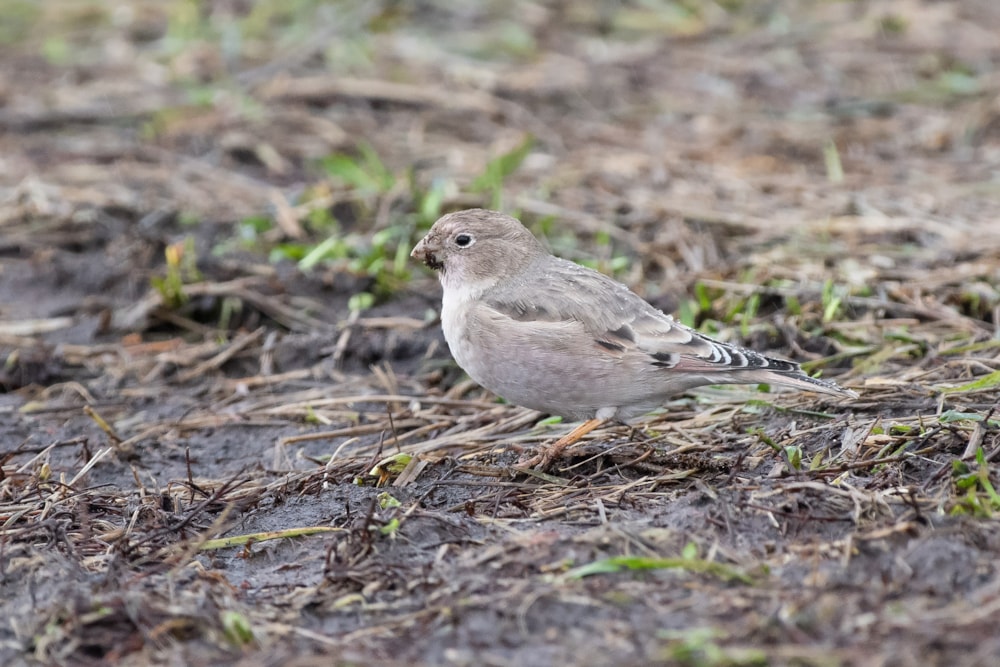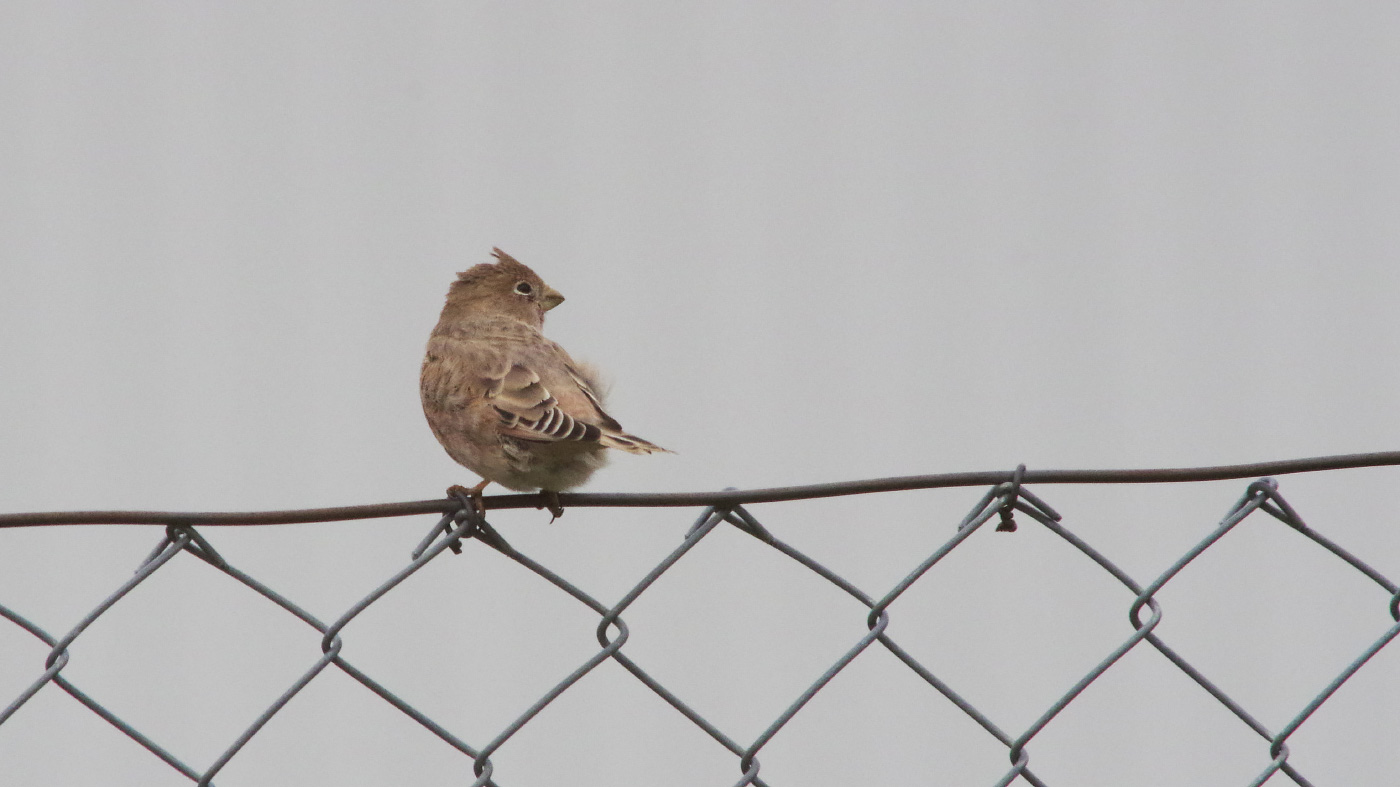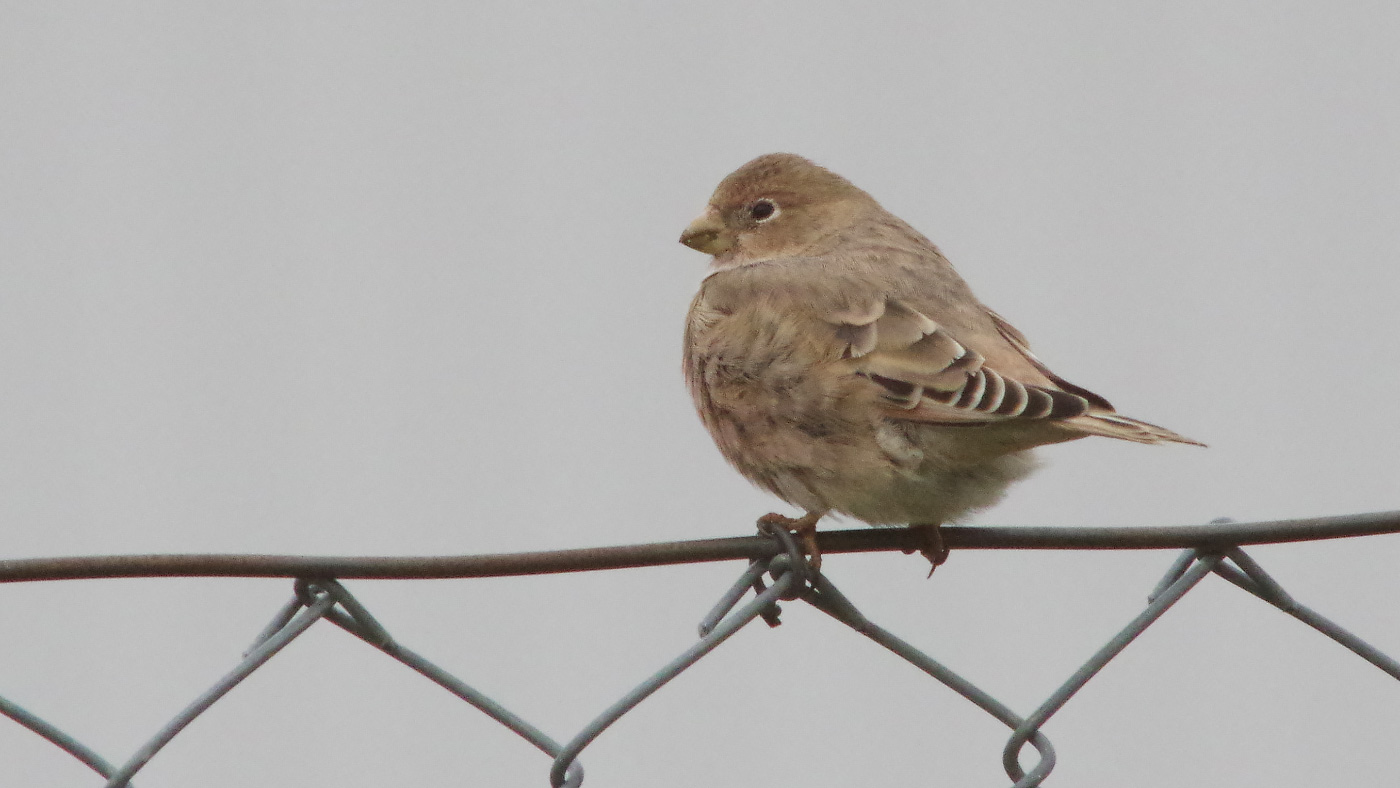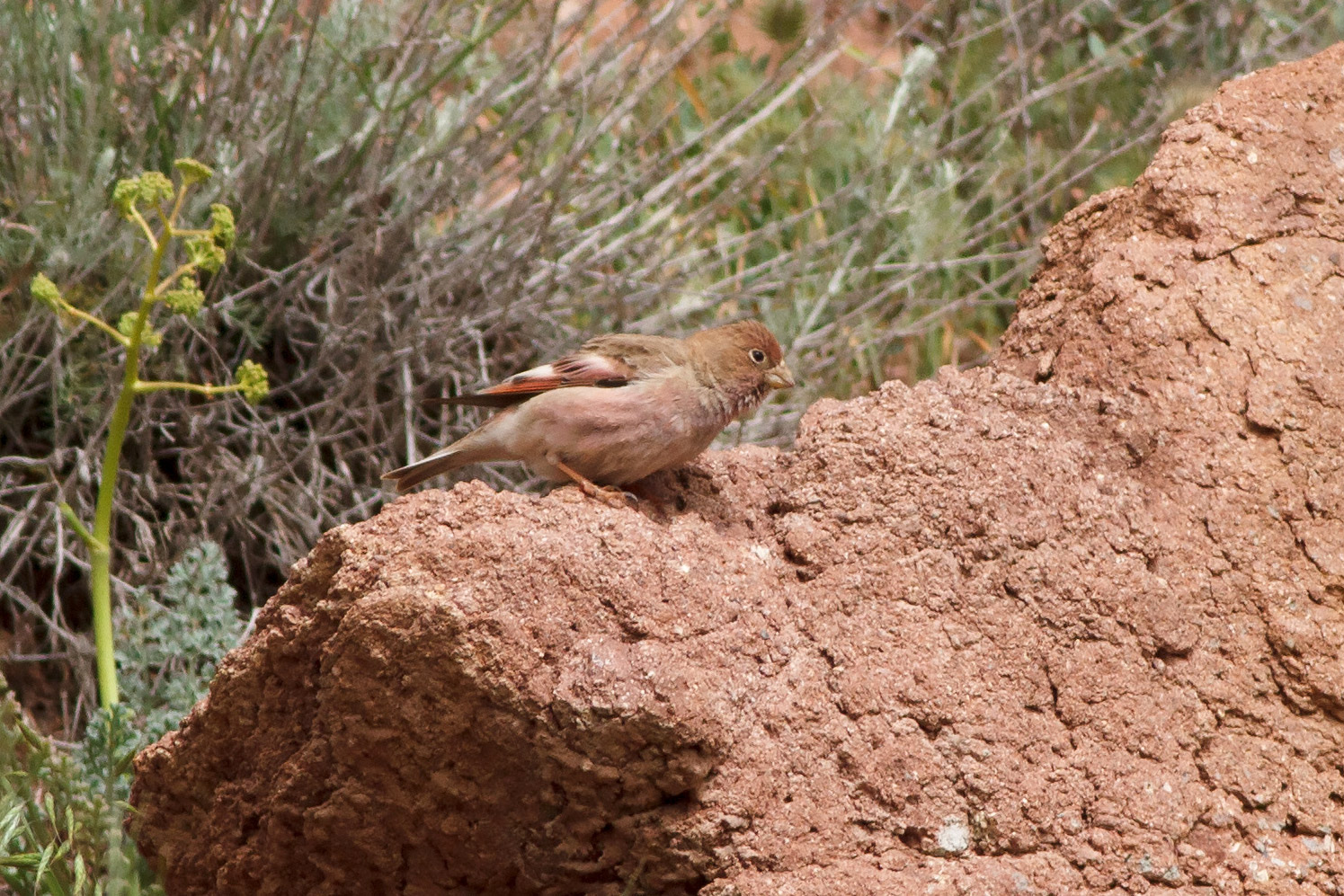The discovery of a male Mongolian Finch well inland in Dalarna county, Sweden, on 25 October 2020 raised eyebrows among the European birding community. At first glance, surely this was such an unlikely vagrant and, given its inland locality – coincidently just 30 km from where a Meadow Bunting in apparently poor condition had been seen two weeks previously – most probably an escape from captivity?

Male Mongolian Finch, Venjan, Sweden, 26 October 2020 (Håkan Johansson).
Mongolian Finch is a partly migratory species that undertakes short to medium-distance dispersals. It breeds from extreme eastern Turkey, Armenia and Nakhchivan (Azerbaijan) eastwards through Central Asia to north-east China. Its seasonal movements are usually altitudinal in nature, although it has been recorded as a vagrant as far south as Kuwait, Bahrain and Saudi Arabia. Autumn movements occur between late September and late November.
The only previous European record of Mongolian Finch involved a first-winter male on Malta, which was discovered in bizarre circumstances. Video footage of the bird taken in 2014, imprisoned in a cage, emerged some years after the event; it later became apparent that the unfortunate finch had been held in captivity for around 18 months before its death (Fenech & Ebels, 2018). Further investigative work revealed that it had been caught by bird trappers in the north-west of Malta on 15 November 2013 and concluded that the story – and therefore the bird – was legitimate.
But then, in late October 2020, the saga gained more traction. Attention was drawn to photos of a 'Trumpeter Finch', taken in Møre og Romsdal county, western Norway, on 19 October 2018 by Helge Gyldenås, which saw it quickly reidentified as another male Mongolian Finch – extraordinarily, this locality is just 490 km ENE of Unst, Shetland. Features such as the pinkish face and ivory-coloured bill quickly ruled out the more expected species.


Male Mongolian Finch, Åndalsnes, Norway, 19 October 2018 (Helge Gyldenås).
All of a sudden, it seemed a pattern was beginning to emerge. Mongolian Finch, a species apparently unknown in the caged bird trade in Europe, had shown up three times in late autumn in the space of eight years. This prompted examination of further historical autumn records of Trumpeter Finch from northern Europe. A black-and-white photo of a Trumpeter, taken at Põõsaspea, Estonia, on 2 October 1997, was initially thought to be another likely candidate for Monoglian Finch, but has transpired to be a Trumpeter after all, now that the colour slides have been properly assessed.
The vast majority (14) of British records of Trumpeter Finch have occurred in May and June, with single records in August and September the only exceptions. One on Alderney, Channel Islands, from 29 October-1 November 1973 immediately draws attention, but the description (including "bill thick and heavy, pinkish-red" and "pinkish-red face mask, like that of a Goldfinch") clearly fits Trumpeter better than Mongolian. Additionally, the description of a bird in Essex in September 1985 explicitly refers to the nasal, metallic call of a Trumpeter Finch.

Male Mongolian Finch, Nakhchivan, Azerbaijan, May 2015. This species maintains a toehold as a Western Palearctic breeder, being found in easternmost Turkey and parts of Armenia, as well as Nakhchivan (Josh Jones).
Prior to October 2020, few would have seriously considered Mongolian Finch as a plausible vagrant to Europe. However, perceptions can and do change very quickly in the contemporary ornithological world – look at the remarkably rapid transition of Short-tailed Shearwater's status in the Western Palearctic (WP) from unrecorded possibility to established visitor in the space of a few weeks in summer 2020. There is little doubt that birders' horizons are being broadened as to what is possible when it comes to vagrancy. Improvements in both communication (especially social media) and documentation through the rise digital photography are having a profound impact on this.
The sudden arrival of Mongolian Finch on the scene as a potential vagrant also opens up the possibility of what other species might be feasible from a similar range. The obvious example for many British birders is Desert Finch, an individual of which famously appeared at Dungeness, Kent, on 30-31 October 2001. However, the picture is more complicated with that species for, unlike Mongolian Finch, it is (was) kept widely in captivity in Europe. Nonetheless, the BOU's official statement on Desert Finch, which included "there is little evidence for vagrancy of the species to Western Europe beyond its natural breeding range from the Middle East", could easily have applied to Mongolian Finch just a few weeks ago. It is a reminder that knowledge and understanding of birds continues to advance and, in conjunction, national records committees must evolve their positions and acceptance criteria with regard to such species.
For now, though, no further retrospective records of Mongolian Finch have come to light, but no doubt all future records of Bucanetes finches in Europe – and especially those in autumn – will be carefully scrutinised.
References
Fenech, N, & Ebels, E. 2018. Mongolian Finch captured in Malta in November 2013. Dutch Birding 40(1): 38-40.
Sharrock, J T R, & Grant, P J. 1982. Birds new to Britain and Ireland. T & A D Poyser, Hertfordshire.



